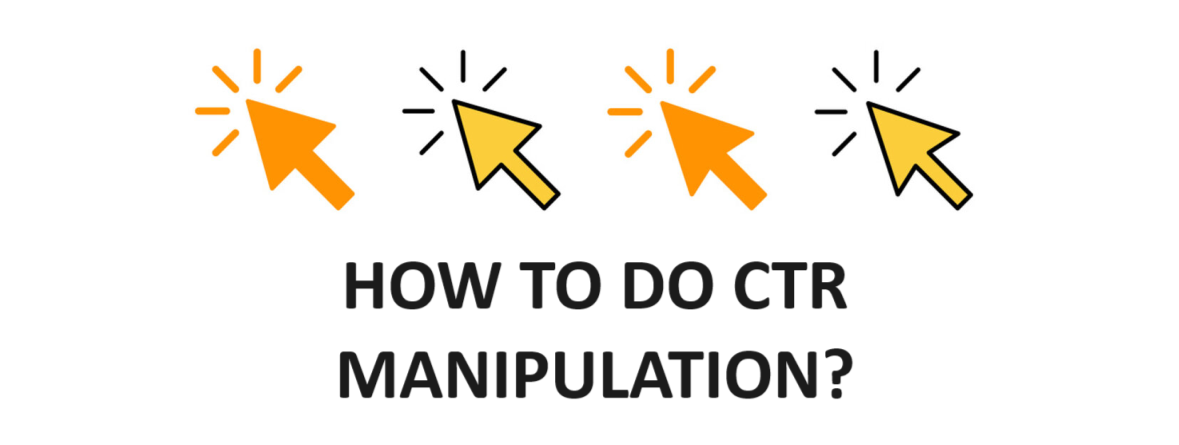Decoding CTR Manipulation: Techniques for Exceeding Competitors
Decoding CTR Manipulation: Techniques for Exceeding Competitors
Blog Article
Maximize Click-Through Prospective With Strategic CTR Control Strategies
The true art lies in tactically manipulating these components to engage customers and drive them towards desired activities. By diving into the realm of critical CTR adjustment, online marketers can unlock the capacity for boosted individual engagement and conversions.
Crafting Compelling Duplicate
Crafting interesting and persuasive duplicate is vital to catch the interest and interest of your target market. When developing web content, it is important to recognize the demands, desires, and discomfort points of your target market. By tailoring your messaging to reverberate with your target audience, you can successfully connect the value suggestion of your product and services. Using compelling language, narration strategies, and a clear call to action can help drive engagement and encourage your target market to take the preferred activity.
To craft compelling duplicate, beginning by conducting complete study to acquire understandings right into your target market's demographics, preferences, and actions. End with an engaging phone call to action that prompts viewers to click, sign up, or make an acquisition. By complying with these guidelines, you can create copy that reverberates with your target market and maximizes your click-through capacity.
Strategic Button Positioning
To boost the performance of your compelling duplicate in driving customer involvement, calculated button positioning plays an important duty in directing the audience towards taking preferred activities on your website or advertising and marketing materials. When purposefully putting buttons, it is vital to consider variables such as presence, closeness to vital material, and the all-natural flow of the web page.
Placement near famous content or at the end of an engaging message can boost the probability of a user clicking on the button. Utilizing contrasting colors or strong styles can additionally accentuate the button, making it a lot more visible to customers. Furthermore, making certain that the button is conveniently clickable and receptive on both desktop computer and mobile phones is important for a seamless user experience.
In addition, A/B screening different switch positionings can offer important understandings right into which placement drives one of the most involvement. By examining user actions and click-through rates, you can optimize switch placement to make the most of conversions and achieve your wanted outcomes. Strategic switch placement is an effective tool in capturing individual attention and urging them to do something about it, inevitably causing enhanced click-through prices and conversions.
Utilizing A/B Examining
Exactly how can A/B screening improve the optimization of switch placements to maximize individual involvement and click-through capacity? A/B screening, also referred to as split testing, is an effective device that enables online marketers to contrast two versions of a websites or app to figure out which one performs much better. A/B testing can give important insights right into which layout or placement drives higher click-through prices when it comes to switch positionings. By creating variants informative post in switch colors, sizes, message, and placements, online marketers can explore different mixes to identify the most effective choice.

Optimizing Meta Descriptions
Enhancing online search engine visibility and user engagement can be attained via critical optimization of meta summaries. Meta descriptions play an important function in providing a brief recap of the web page material to users on online search engine result pages. To optimize meta summaries successfully, it is vital to craft engaging and concise summaries that properly show the page's content while enticing customers to click with to the website. Consisting of appropriate keyword phrases in meta descriptions can boost the page's presence on online search engine results and bring in individuals proactively looking for specific details.
In addition, keeping meta summaries under the recommended character restriction, generally around 150-160 personalities, ensures that the entire summary is displayed on online search engine results, boosting readability and increasing the probability of customers clicking through. Using action-oriented language, such as including calls-to-action or posing interesting inquiries, can also help in driving individual involvement and increasing click-through rates. Constantly keeping an eye on the efficiency of meta descriptions and making adjustments based on individual communication information can better refine optimization techniques for enhanced online search engine presence and customer involvement.
Leveraging Abundant Snippets
Leveraging abundant bits can substantially boost the presence and click-through possibility of web pages in internet search engine outcomes. Rich bits supply individuals with a peek of the website's content directly on the search engine results web page. By integrating organized data markup, sites can highlight details info such as reviews, scores, prices, and product accessibility. This extra info not just makes the search result even more interesting but additionally more appealing to individuals, boosting the possibility of them clicking through to the webpage.
When online search engine present abundant fragments, they attract attention from the routine search engine result, attracting try this out the customer's interest and raising the chances of interaction. Sites that utilize abundant bits effectively can experience greater click-through prices and boosted organic website traffic. Rich fragments help browse engines much better understand the content of web pages, possibly leading to improved rankings for pertinent search queries.
Conclusion
To conclude, making the most of click-through capacity calls for strategic control methods such as crafting engaging duplicate, strategic button placement, using A/B screening, maximizing meta descriptions, and leveraging rich snippets. By executing these methods, organizations can increase their chances of attracting more clicks and eventually driving even more web traffic to their internet sites (CTR click this link Manipulation). It is crucial for companies to continuously evaluate and refine their techniques to stay ahead in the competitive online landscape
By evaluating individual behavior and click-through rates, you can optimize button placement to make the most of conversions and attain your preferred results. Strategic button placement is an effective device in recording customer interest and motivating them to take action, ultimately leading to enhanced click-through prices and conversions.

Report this page